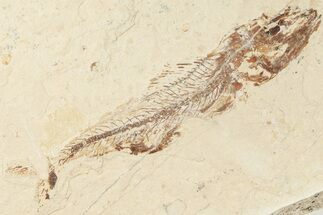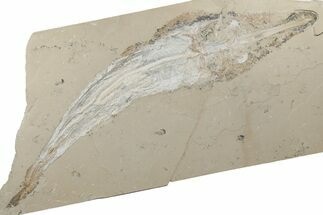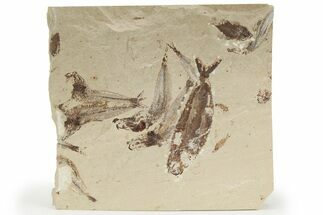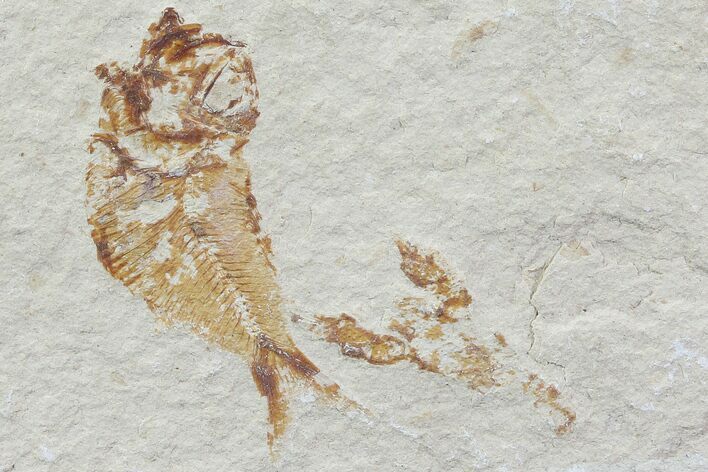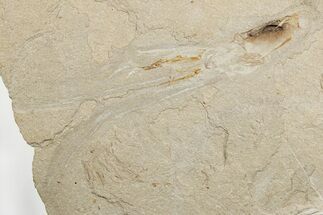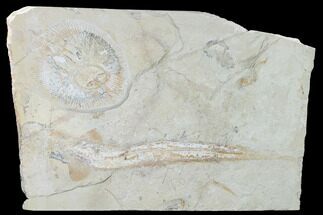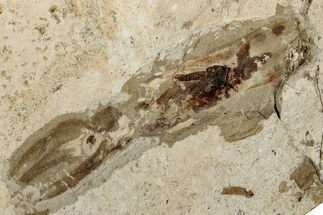This Specimen has been sold.
Cretaceous Fossil Fish (Armigatus) & Lobster - Lebanon
This is a bargain, fossil fish (Armigatus) with a small fossil lobster from the Upper Cretaceous deposits of Lebanon. The orange/brown coloration on this specimen is gorgeous and it shows well against the light colored matrix. It comes with an acrylic display stand.
Armigatus is the most common fossil fish from the deposits of Lebanon. It was a fairly small schooling fish, averaging about 2 inches in length. It was originally described as Clupea, then as a species of Diplomystus before it's current name of Armigatus.
Armigatus is the most common fossil fish from the deposits of Lebanon. It was a fairly small schooling fish, averaging about 2 inches in length. It was originally described as Clupea, then as a species of Diplomystus before it's current name of Armigatus.
The discovery of amazingly preserved marine fossils near Hakel, Lebanon dates back many centuries. In fact, they were first mentioned in writing by Herodotus, over 450 years before the birth of Christ. The first scientific work on these localities began in the 1800s: these deposits have been meticulously quarried by several Lebanese families for over a century. We purchase our specimens directly from one of these families.
These deposits represent a warm, shallow sea of the Middle Cretaceous, and have yielded over 70 types of fish and numerous other genera found nowhere else in the world. The preservation on many of these specimens is truly amazing: many examples of soft bodied preservation have been found.
These deposits represent a warm, shallow sea of the Middle Cretaceous, and have yielded over 70 types of fish and numerous other genera found nowhere else in the world. The preservation on many of these specimens is truly amazing: many examples of soft bodied preservation have been found.
SPECIES
Armigatus
LOCATION
Hakel,Byblos, Lebanon
FORMATION
Sannine Formation
SIZE
Fist 1.8", Lobster 1.1", Rock 4.4x2.9"
CATEGORY
SUB CATEGORY
ITEM
#77124
We guarantee the authenticity of all of our specimens.
 Reviews
Reviews


